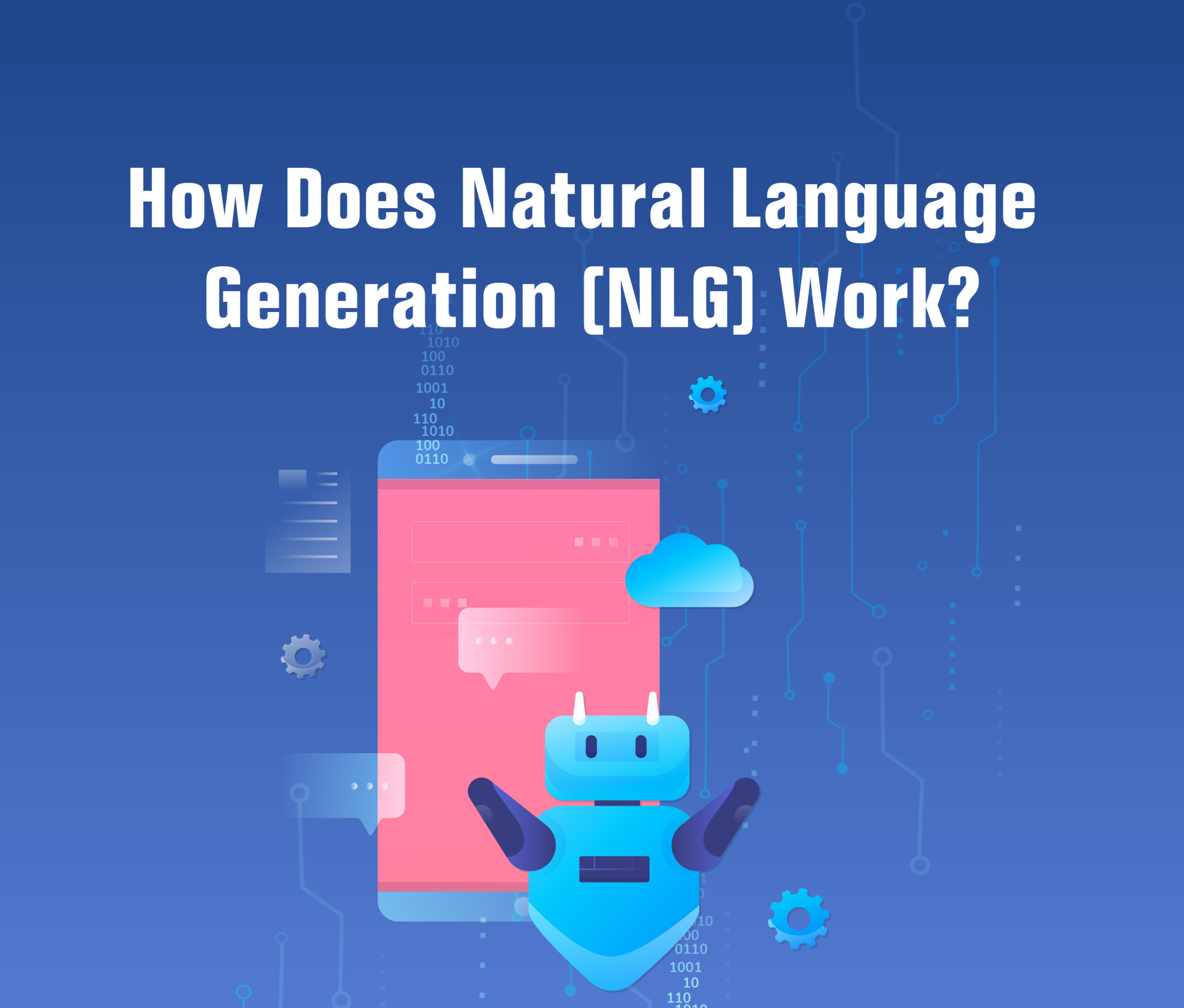You’ve probably heard the buzz about Natural Language Generation (NLG) lately. It’s making waves in the tech world, with billion-dollar language startups in the industry shaking up the way we create content and chat with machines.
But let’s dive a bit deeper and answer a couple of burning questions: What exactly is NLG? And how does it work?
Let’s dig in!
What is Natural Language Generation (NLG)?
NLG, a subset of NLP, refers to a software process that automatically converts structured data into text that can be easily read and understood by humans.
With the appropriate data in the correct format, businesses can leverage NLG to effortlessly produce numerous data-based narratives within minutes. NLG, a form of content automation, specifically centers around automating the creation of written text.
How Does Natural Language Generation (NLG) Work?
 NLG technology is made possible through various computer science procedures. These encompass:
NLG technology is made possible through various computer science procedures. These encompass:
➔ Computational linguistics
It’s about analyzing written and spoken language for computers. This process involves dissecting dialogue to create a system that computer software can understand. By using semantic and grammatical frameworks, we build a language model that allows computers to accurately analyze our speech.
➔ Natural Language Processing (NLP)
Natural Language Processing (NLP) refers to the practical implementation of computational linguistics in analyzing and understanding human language, whether it is written or spoken. NLG is considered a subset of NLP.
➔ Natural Language Understanding (NLU)
Natural Language Understanding (NLU) goes beyond recognizing words or phrases. It aims to grasp the emotion, intent, effort, and goal behind the speaker’s communication, mirroring human understanding. This takes machine learning to a more intricate level for enhanced comprehension.
Top 10 Natural Language Generation Tools to Consider in 2023
NLG tools enable the utilization of artificial intelligence and machine learning to generate and articulate content for commercial applications. Here are a few notable natural language generation tools worth considering:
1. Arria
Arria employs NLG to extract and summarize data, resulting in the generation of coherent and comprehensible narratives.
2. Automated Insights
Automated Insights utilizes NLG technology to generate earnings reports and sports articles, including box scores, results, and other data-driven narratives.
3. Clickvoyant
Clickvoyant employs NLG to greatly decrease the amount of time needed for extracting insights from analytical data and generating presentations based on those insights.
4. Drift
Drift utilizes NLG in a conversational manner to remove obstacles in the purchasing process through chat, email, and automated offerings.
5. Exceed.ai
Exceed.ai leverages artificial intelligence (AI) to engage with every sales lead in your pipeline. Through human-like, interactive conversations via chat and email, Exceed.ai effectively communicates with each individual lead.
6. HyperWrite
Hyperwrite is a natural language generation tool that employs human prompts to automatically generate sentences and paragraphs.
7. MarketMuse
MarketMuse is an AI-powered tool designed to assist you in developing content strategies and constructing impactful posts. By utilizing NLG, it provides summary briefs that enable you to effectively write your articles.
8. Narrative Science
Narrative Science employs NLG to transform structured data (such as spreadsheets) into narratives that resemble human-written stories.
9. Persado
Persado leverages natural language generation (NLG) to optimize marketing content and foster innovative messaging that effectively reaches your potential customers through various communication channels.
10. Phrasee
Phrasee utilizes NLG to generate email subject lines automatically, surpassing the capabilities of human writers. Consequently, this leads to increased open rates.
NLG’s Influence on Real-world Content Automation
 Below, you’ll find a collection of tangible examples showcasing the practical application of natural language generation in automating content creation:
Below, you’ll find a collection of tangible examples showcasing the practical application of natural language generation in automating content creation:
- GPT-3, developed by OpenAI, generates articles like “Robots Come in Peace”. While it produces well-written content, it may lack logical coherence, leading to potential errors.
- LaMDA, Google’s dialogue-focused language model introduced in mid-2021, was trained on extensive data and even took on personas like Pluto and a paper airplane during its public debut.
- Wu-Dao, China’s enhanced counterpart to GPT-3, was trained on 4.9 terabytes of high-quality images and text in both English and Chinese. It is capable of generating text and images and was presented to the public as a virtual student proficient in poetry, drawing, and music composition.
- In 2019, Springer published its first book entirely generated by a machine.
- Gmail’s Smart Compose suggests what to type next in an email and learns from your selections to refine its recommendations for future emails.
- The paraphrasing tool QuillBot relies on NLG.
- Any conversational AI or chatbot application also falls under the umbrella of NLG examples.
Final Thoughts
Natural language generation (NLG) is an intriguing domain within natural language processing (NLP) and artificial intelligence (AI). It centers on generating natural-sounding human language, both in written and speech forms, from structured or non-linguistic data. NLG finds applications in various areas, including chatbots, virtual assistants, content creation, automated reporting, and beyond.
Natural language generation companies are constantly refining their algorithms and models, ensuring that the generated content is not only coherent but also contextually relevant. Their expertise lies in fine-tuning the nuances of language in order to make it indistinguishable from human-generated text.
With the progression of technology and the advent of more powerful language models, NLG is set to become even more pivotal in automating content production and facilitating seamless communication between humans and machines. Its role is poised to expand as technology continues to advance.


